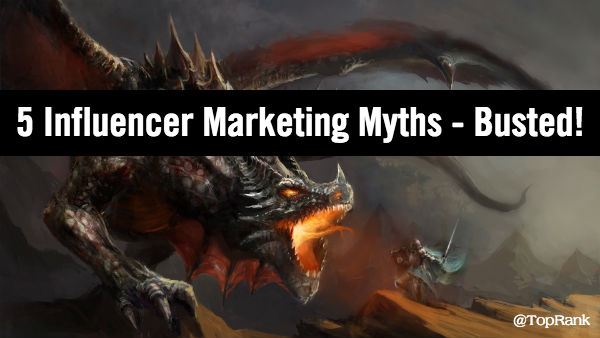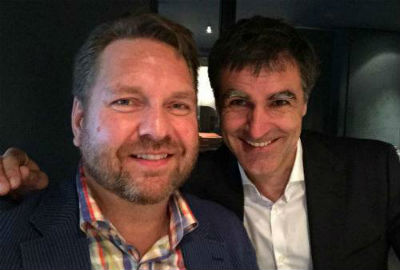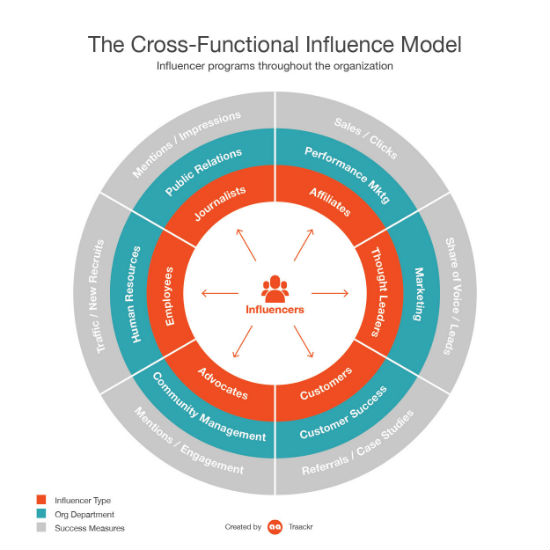
The popularity of influencer marketing has made the field ripe for opportunists to capitalize. That’s what happens when new trends emerge into mainstream marketing: advice and experts start popping up everywhere.
Some of that advice is good, some is suspect and plenty is just pure mythology. Like a dragon – just as mythical but also potentially dangerous to your marketing.
Fantastic tales of fame and success ala the latest marketing tactic du jour rarely lead marketers to business success. Realizing the potential negative effects of alluring speculation and misinformation to marketers, I decided to take the pulse of our community on what the most common and dangerous myths about influencer marketing are.
Below are 5 of the biggest myths that emerged from my informal poll. I also included insights from established marketing industry leaders and experts – most from the UK. Why the UK? Well, that’s because this is all part of a presentation I gave today at the Digital Marketing World Forum in London along with Nicolas Chabot of Traackr.

That’s right, I co-created my presentation (and this post) on influencer marketing with influencers.
Along with the expert insights, you will also find my perspective, earned after many years of studying, experimenting with and implementing influencer marketing projects and programs for brands big and small. Together, we are the influencer marketing myth dragon slayers.
Myth #1: Popularity = Influence

Busted: “It is a Myth that Influencer Marketing is Marketing Based Only on Popularity, Mistaken for Influence.”
Neville Hobson – Senior Business Consultant, IBM Social Consulting
My take: A core expectation of working with influencers is for the brand to reach new audiences and therefore, one of the temptations of qualifying which influencers to work with has often focused on the convenient metric of popularity.
While audience and reach are very important, it’s what people do once you’ve reached them that pays the bills. What good is being promoted to a Twitter audience of a million followers if no one clicks the link, shares the tweet or is otherwise affected?
A great example is ZEFR’s analysis that compares talk show host Jimmy Fallon to YouTube star Connor Franta. Fallon has 207% greater reach with 38.4m vs. 12.5m average reach across social platforms, but Franta gets 66% more engagement despite having a smaller network. The other piece to this is, good luck getting Jimmy Fallon to be your influencer 🙂
Myth #2: You Should Buy Influencers Like You Buy Advertising

Busted: “The notion that you can buy influencers like media is dangerous. It’s a relationship business, not real estate.”
Stephen Waddington – Chief Engagement Officer, Ketchum
My take: It is true there is an organic and a paid approach to working with influencers just like anything else from search to social to content. The myth here is that you always need to pay influencers and that just isn’t true.
My observation is that it’s far more common for consumer brands to pay content “Creators” to whip up YouTube videos, Snapchats, Instagrams, etc and promote to their audiences. And it works! Just this morning my son said he chose a DiGiorno pizza because when confronted with the freezer of choices at the grocery store, he rememberd the gamers that made videos that included DiGiorno’s.
For B2B marketing where there are many opportunities to create content across the sales experience, it’s common to collaborate with influencers and co-create without direct compensation, although that certainly happens.
Paying influencers comes down to what they’re doing for you. When you pay someone that has talent AND and audience to promote to, it makes sense to pay them.
When you identify a brand fan or advocate and invite them to co-create content around things they already care about, that’s more of a collaboration.

It’s possible to do both in the same program and to be honest, it’s helpful to have people who are experienced with this sort of thing to plan and implement properly. Just don’t throw ridiculous money at influences and expect magic fairy dust to spout out of a unicorn’s a** for you.
Myth #3: Brands Don’t Have Time to Develop Influencer Relationships

Busted: “Brands must make the time to authentically build relationships with influencers and there is no better way to do that, than co-creating content.”
Jason Miller – Senior Manager, Global Content Marketing, Marketing Solutions, LinkedIn
My take: Here’s a situation you might relate to. An amazing campaign is concepted, created and ready to drop. And it’s suggested that you reach out to some influencers to help you promote. There’s no time to create a relationship in this situation except for the monetary kind.
Alternatively, when influencers are included from the start, from planning to creation, they’re invested in the success of the end product. The act of collaborating on the creation of the content facilitates the relationship. By the time the content is ready to promote, the influencer is ready too.
Every influencer campaign we do adds more influencers to our influencer talent pool that we can engage with on future projects In fact, over the last 10 projects we’ve added over 150 influencers, many of them executives at brands we’d like to work with. These are relationships born out of collaboration and leading with value for the influencer first – not us selling anything. It sets the stage for a genuine relationship that’s meaningful, not mechanical.
Myth #4: Influencer ROI is Measured Through Participation and Social Media

Busted: “True influencer ROI goes way beyond social shares and output counts; it’s in the doors those influencers can open for you and the relationships they help you build.”
Shonali Burke – President & CEO, Shonali Burke Consulting

“Are influencers really creating value for your brand? You’re never going to know until you do the research.”
Mark Schaefer – Executive Director, Schaefer Marketing Solutions
My take: It comes down to goals and how you will monitor progress towards those goals as well as achieving them. If your goal is simply to create more broad awareness for your brand, then increase in social network size, social shares and other engagement metrics may be your focus.
But if your goals are to inspire business outcomes like leads, sales, and revenue, then you have a different mix of metrics to work with.
Our approach to working with influencers almost always involves content and digital content is amazingly measurable.
In fact, we use an Attract, Engage, Convert model to make sure influencer content pulls in the intended audience (both from the brand community and the influencer’s community), creates an engaging and relevant experience with the content and inspires them to take action – whether it’s a share, a demo, trial, download, subscription, inquiry or transaction.
Myth #5: Influencer Marketing Replaces Existing Marketing

Busted: “Influencer marketing can and should fit into your existing marketing activities, complementing them and accentuating them.”
Joel Harrison – Editor-in-chief, B2B Marketing
My take: Some still see influencer marketing as a silo within PR and comms or marketing and others see it more holistically as something that could work cross functionally in your organization as depicted in the diagram below from Traackr.

While I happen to agree that influencer marketing programs can actually be both, the myth that influencer marketing replaces other marketing is based in fear. Approaching marketing strategically, with empathy to the customer experience and with an understanding of what influences inspire action amongst your community, it would be foolish not to incorporate influencer engagement at strategic planning stages for marketing.
Being more strategic about influencer marketing isn’t a myth or something to be feared. It’s what smart companies are doing to scale quality content and relationships where it matters most.
Beyond these 5 “dangerous” influencer marketing myths are 20+ more from members of our community as well as from the team at TopRank Marketing. Consider these “myths” as you evaluate or revise your approach to a successful influencer marketing strategy.
Angela Lipscomb, Influencer Relations Manager, SAS
“That paying influencers devalues them as influencers. Depends what they’re paid to do. A good one won’t take money to endorse.”
Peter Van Brunt, Enterprise Account Executive, Traackr
“That you have to pay influencers in order to work with them.”
Didier Rombaut, Social Enablement and Innovation, Cisco
“All influencers are not born equal Segmentation is key for a successful communication It’s labor intensive and not free.”
Ashley Faulkes, Founder/Consultant, Mad Lemmings
“That influencers are the only worthwhile “targets” for such campaigns. Often mid-level bloggers give more engaged results.”
Missy Berggren Voronyak, Group Director, Social Strategy and Engagement, WCG
“That influencers just want free stuff.”
Venkataraman Ramachandran, Digital Engagement Specialist, Cognizant
“That Micro-Influence can be gamed where long-term behaviors can be optimized within shorter time spans as per marketing cycles.”
Haroon Bijli, Head of Digital, BC&D, India Philips
That influence can be measured by the number of connects / follows / likes.
Diana Arhir, Communication Specialist @United Nations
“That one powerful influencer can fit all situations. Even if one is powerful, the impact he can have on one brand is going to be different on other. Depends on what one wants to achieve with influencer marketing.”
Shagorika Heryani, Head – Digital Practice, Bharat Bambawale & Associates
“A big myth is that influencer marketing is a bolt on to a marketing campaign or product launch. Rinse and repeat.”
Tony Saucier, Director of Enterprise Content, Life Time
“Talking to “influencers” means considering people with the largest followings.”
Hal Werner, Digital Content Strategist, Mitel
“That you can add their participation on at the end as a promotional tactic just like email or PPC.”
Michael Stricker, Lead Consultant, MSDesign
“Influencer marketing’s biggest myth is thinking that you can leverage personal brands without beguiling personalities.”
Derek Cromwell, Content Writer, Thunder Bay Media
“That it’s somehow only available to big brands with deep pockets. Too many people put price before relationship. When you put the relationship first it’s possible for anyone, of any size, to benefit.”
Kevin Cotch, SEO Analyst, TopRank Marketing
“A one-size-fits approach. I feel like too many people look at influencer marketing too narrowly, and doesn’t take in account the multiple levels it requires to run a successful campaign.”
Evan Prokop, Digital Marketing Manager, TopRank Marketing
“That there’s a one-to-one relationship between community size (i.e. followers) and degree of influence, specifically when deciding on who to include in your outreach attempts.”
Tiffani Allen, Account Manager, TopRank Marketing
“That outreach doesn’t need to be compelling, they’ll be happy to contribute for the ‘exposure’ rather than a clear benefit.”
Debbie Friez, Social Media Lead, TopRank Marketing
“That you will automatically have a successful campaign if you use influencer marketing.”
Ashley Zeckman, Director of Agency Marketing, TopRank Marketing
“That all influencers and all influencer content projects are created equal.”
Knute Sands, Account Manager. TopRank Marketing
“If my product marketing isn’t working, influencer marketing will solve the problem.”
Leila De La Fuente, Account Manager, TopRank Marketing
“That’s it’s only for large companies with large marketing budgets.”
Martin Jones, Senior Marketing Manager – Social Media & Content Marketing, Cox Business
“That a large social following does not equate to someone being a great influencer.”
Chris Garrett, Chief Digital Officer, Rainmaker Digital
“Getting influencers to endorse your product will guarantee ROI.”
Amber Naslund, SVP Marketing, Sysomos
“That influencer marketing can and does supplant foundational marketing strategies.”
Konstanze Alex, Corporate Social Influencer Relations Manager, Dell
“That influencer marketing equals celeb endorsement.”
Do you agree that these are major issues and myths when it comes to influencer marketing? What would you add?
If you’ve started an influencer program or are about to and want to improve your success rate at engaging influencers, be sure to check out this ebook: How to Fail and Win at Influencer Engagement or you can check out our influencer marketing consulting services at TopRank Marketing.


